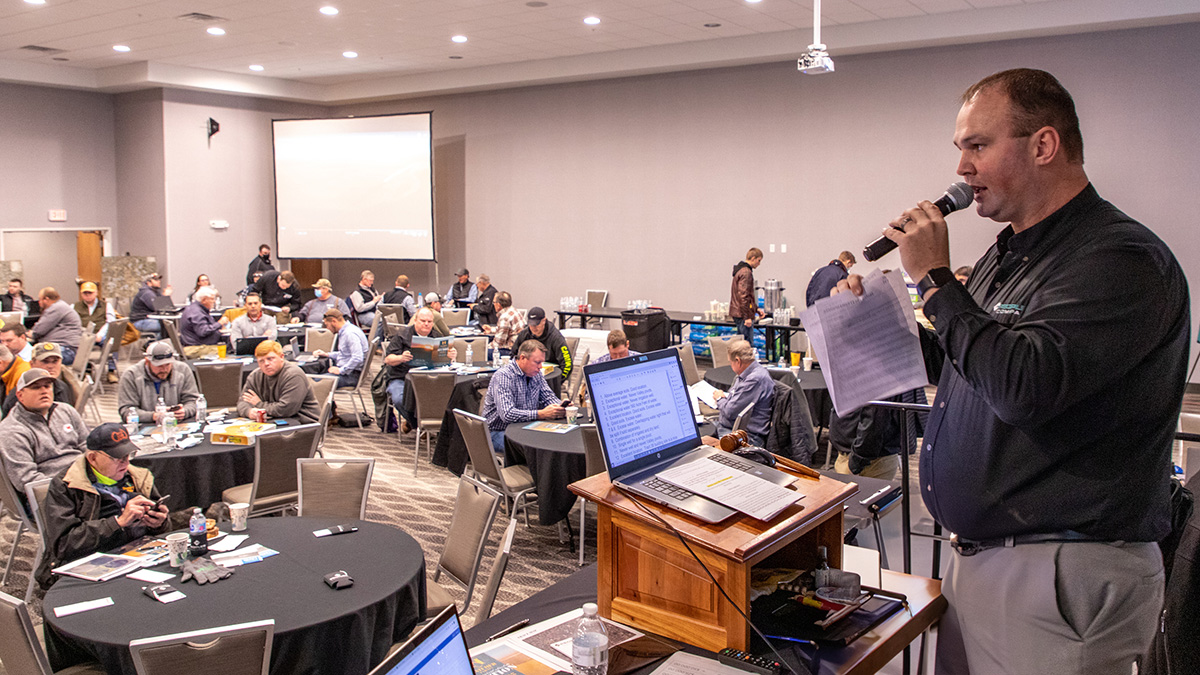
The auction method of marketing has been a tried-and-true way of selling all types of assets for hundreds, if not thousands, of years. This marketing method is often considered to reflect true price discovery for the particular asset being auctioned. Due to the competitive nature of auctions, they are a popular avenue to market high-value assets from collector cars to farmland.
Here in the Midwest, especially Iowa, it’s typical for farms to be offered via the auction method of marketing. This could be a live/simulcast auction, online-only, or sealed bid format. When marketing a farm for the seller, the agent often wants to use the best format to breed competition for stronger bidding, which in return will yield the highest return possible for their client. In the past 24 months we’ve seen several examples of this approach to marketing farmland come to fruition with multiple state farmland record prices and numerous record-breaking county prices; all of which were set by auctions.
As an auctioneer myself, the auction method of marketing, if marketed and executed properly, will give the owner the best chance to receive top dollar for almost any asset. I especially believe this is true for high-quality farmland. As an agricultural appraiser, I often see instances where public auctions result in sales prices that may be considered above market levels. This could be the result of truly competitive bidding between several parties, multiple neighboring landowners, or even family members bidding against each other. This competitive bidding is often most noticed in the first round of bidding at a “buyer’s choice” auction. As a result, it has been noticed on many auctions, whichever tract sells during the first round of bidding can often be the highest sales price of the auction. This can sometimes be the best tract offered, but many times all tracts are considered similar in quality with the first tract to sell having a noticeably higher sales price.
When analyzing comparable sales for an appraisal project I often run across this exact scenario. Is the first and highest-priced tract a true representation of market value? In most cases, both the buyer and seller are acting in their own best interest, but did the buyer bid with typical motivation? If two parties bid competitively and the price is elevated considerably over what is proven to be current market levels should this transaction be thrown out and not used as a comparable sale or should an adjustment be made for motivation?
In my opinion, the questions above can typically be answered during the verification process of analyzing a comparable sale. As appraisers, we’re not just concerned with “what” the sale price is, but also “why” it sold the way it did. This could be why is the farm selling or why did the buyer purchase the property or what was their motivation? Once we have all the information for the transaction, a reasonable conclusion can be drawn about whether it should be used as a comparable sale and if any atypical motivation occurred.
Most auction transactions in the farmland sector typically reflect market levels. However, there are sometimes outliers that need to be investigated further before being used as a comparable sale due to the competitive nature of auctions. Without proper verification of the transaction, it could drastically change an opinion of value in an appraisal report if used as a comparable sale.
Tyler Weaver is a Certified General Appraiser with Peoples Company and holds appraisal licenses in Iowa, Illinois, and Missouri. To find out more about his appraisal services, contact Tyler at Tyler.Weaver@PeoplesCompany.com. For general appraisal inquiries, our office can also be reached by email at Appraisal@PeoplesCompany.com or by phone at 855.800.5263.

.jpg)





